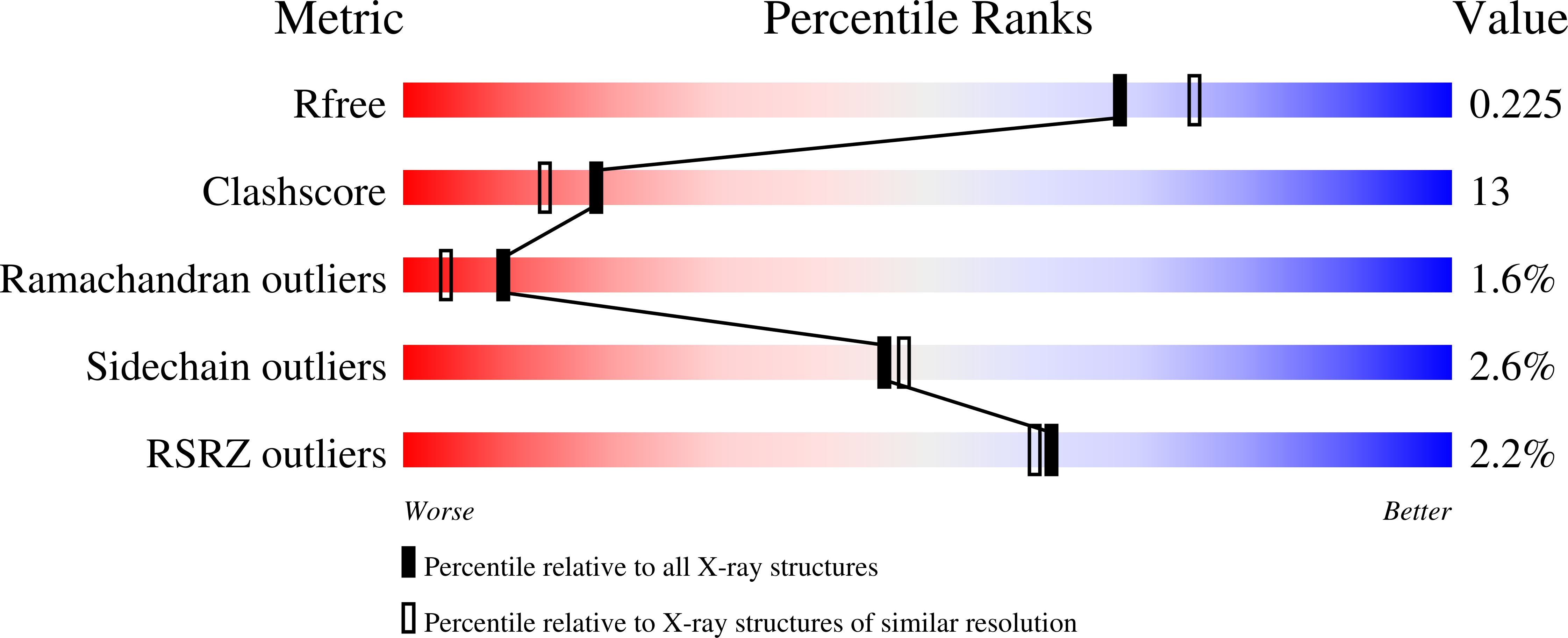Structural basis of nonnatural amino acid recognition by an engineered aminoacyl-tRNA synthetase for genetic code expansion
Kobayashi, T., Sakamoto, K., Takimura, T., Sekine, R., Vincent, K., Kamata, K., Nishimura, S., Yokoyama, S.(2005) Proc Natl Acad Sci U S A 102: 1366-1371
- PubMed: 15671170
- DOI: https://doi.org/10.1073/pnas.0407039102
- Primary Citation of Related Structures:
1VBN, 1WQ3, 1WQ4 - PubMed Abstract:
The genetic code in a eukaryotic system has been expanded by the engineering of Escherichia coli tyrosyl-tRNA synthetase (TyrRS) with the Y37V and Q195C mutations (37V195C), which specifically recognize 3-iodo-L-tyrosine rather than L-tyrosine. In the present study, we determined the 3-iodo-L-tyrosine- and L-tyrosine-bound structures of the 37V195C mutant of the E. coli TyrRS catalytic domain at 2.0-A resolution. The gamma-methyl group of Val-37 and the sulfur atom of Cys-195 make van der Waals contacts with the iodine atom of 3-iodo-L-tyrosine. The Val-37 and Cys-195 side chains are rigidly fixed by the neighboring residues forming the hydrophobic core of the TyrRS. The major roles of the two mutations are different for the 3-iodo-L-tyrosine-selective recognition in the first step of the aminoacylation reaction (the amino acid activation step): the Y37V mutation eliminates the fatal steric repulsion with the iodine atom, and the Q195C mutation reduces the L-tyrosine misrecognition. The structure of the 37V195C mutant TyrRS complexed with an L-tyrosyladenylate analogue was also solved, indicating that the 3-iodo-L-tyrosine and L-tyrosine side chains are similarly discriminated in the second step (the aminoacyl transfer step). These results demonstrate that the amino acid-binding pocket on the 37V195C mutant is optimized for specific 3-iodo-L-tyrosine recognition.
Organizational Affiliation:
Department of Biophysics and Biochemistry, Graduate School of Science, University of Tokyo, 7-3-1 Hongo, Bunkyo-ku, Tokyo 113-0033, Japan.


















